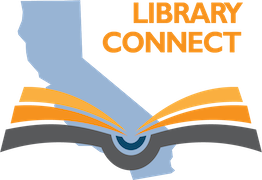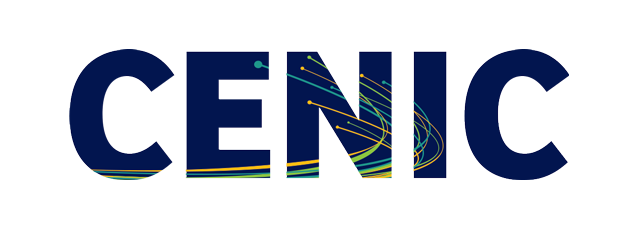CENIC
Collaborating With
Connectivity Speeds
The current target for a library connection is one Gigabit per second (or 1 Gbps). In some cases, this connection is to be shared among library branches. Greater speeds of 10 Gbps are also possible and a number of library jurisdictions with multiple branches have chosen this level of connectivity.
Lower connection speeds are also available, although mostly utilized in remote areas where there is simply no other option. All bids for your locations will be analyzed by CENIC, who will present the best option(s) to you during the RFP process.
In all cases, CENIC circuits have the same bandwidth in both directions (i.e., a “symmetrical connection”). So, in the case of a 1 Gbps connection, the upload connection is 1 Gbps from the library to CalREN, and the download connection is 1 Gbps from CalREN to the library.
In all cases, CENIC circuits have the same bandwidth in both directions (i.e., a “symmetrical connection”). So, in the case of a 1 Gbps connection, the upload connection is 1 Gbps from the library to CalREN, and the download connection is 1 Gbps from CalREN to the library.
Connectivity Costs
The costs provided in quotes, except where it has been explicitly stated that there are additional costs to be determined, represent the total cost to the library for new circuits before any applicable taxes and surcharges.
The quotes represent circuit costs and installation costs, including any special construction costs if required. A library may need to upgrade its owned hardware to connect to CalREN.
One-time costs are typically to pay for the cost of installation of service. These are costs carriers pass on to CENIC and ICOE on behalf of the California State Library. These are typically referred to as “non-recurring costs” or NRCs.
Recurring costs are billed to libraries by ICOE quarterly and cover the expense of carriers keeping the circuit working, including monitoring for problems and making repairs when something is damaged.
To take advantage of higher-speed connections to the Internet, a library may need new hardware. A new router and a new firewall are commonly needed because it takes more advanced hardware to deal with a 1 Gbps data stream (connection speed) than a 100 Mbps data stream. (Sometimes, the router and firewall functionality are combined into one piece of hardware.)
A library may also want to upgrade the network in its building to allow patrons and staff to benefit fully from their new connectivity.
The California State Library offers a grant through the California Library Connect program to help pay for the one-time connectivity costs, including hardware (such as routers and/or switches), site improvements, and technical consultants. More information on the current programs offered can be found at the following sites.
The service provider (e.g., AT&T, Comcast, Verizon, etc.) will bring its service to the library’s minimum point of entry (MPOE) and no further. An MPOE is the point at which a telecommunication provider’s wiring either crosses or enters a building. This is the point at which the carrier’s responsibility ends and the customer’s responsibility begins.
In some cases, the provider can be paid to move the MPOE, but it is likely to be less expensive to run cabling from the MPOE to wherever the library needs the service. The MPOE move or cabling cost would be the responsibility of the library.
Also, if additional electrical power is required in the MPOE in order to house the hardware there, then this cost will need to be paid for by the library. However, both of these costs are eligible for grant funding through the California Library Connect Program.
Per E-rate guidelines, the price must be the most heavily weighted factor in a review of bids and the most cost-effective bid must be chosen. Keep in mind that the most cost-effective bid may not be the bid that offered the lowest cost; but should be the bid that garners you the services you sought for the best price given your specific requirements.
In other words, the lowest cost isn’t always the same as best value. As such, CENIC also looks at other important factors, such as the ability to upgrade to higher bandwidth without incurring termination penalties, ability to relocate services without incurring penalties or modifying the original contract terms, response time and credits for outages, etc. CENIC may provide two or three of the best options for library staff to choose between, if multiple bids are received which score highly.
CENIC facilitates all connections to the CalREN network and is happy to advise decisions between options when they exist.
The bid documents are confidential, so CENIC cannot share them broadly. However, they can, upon request, send you a list of the pricing received specific to your library.

